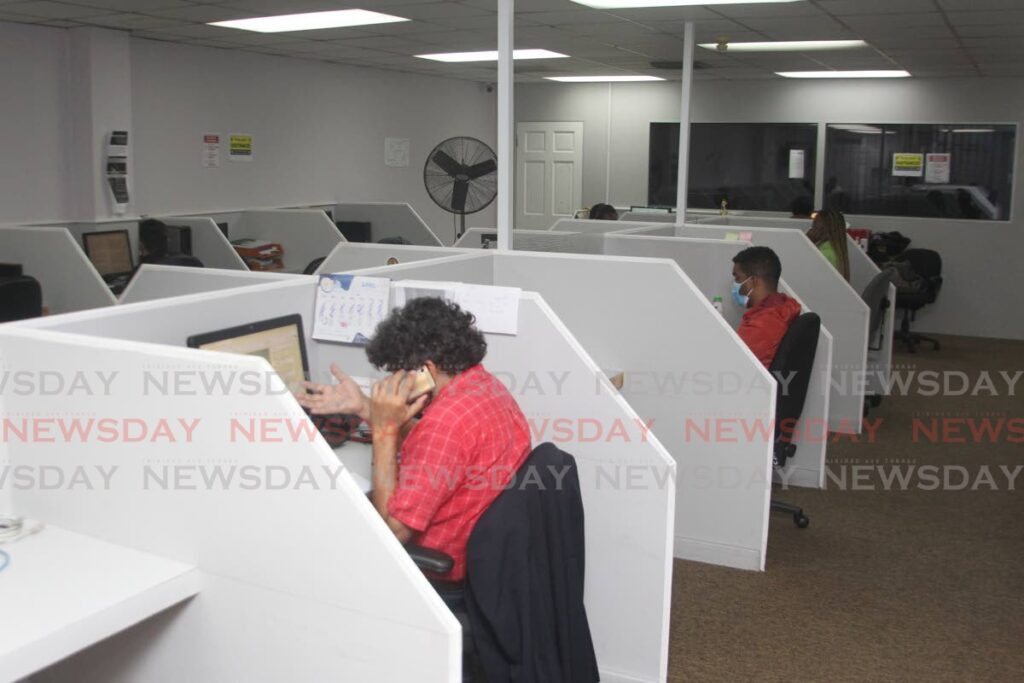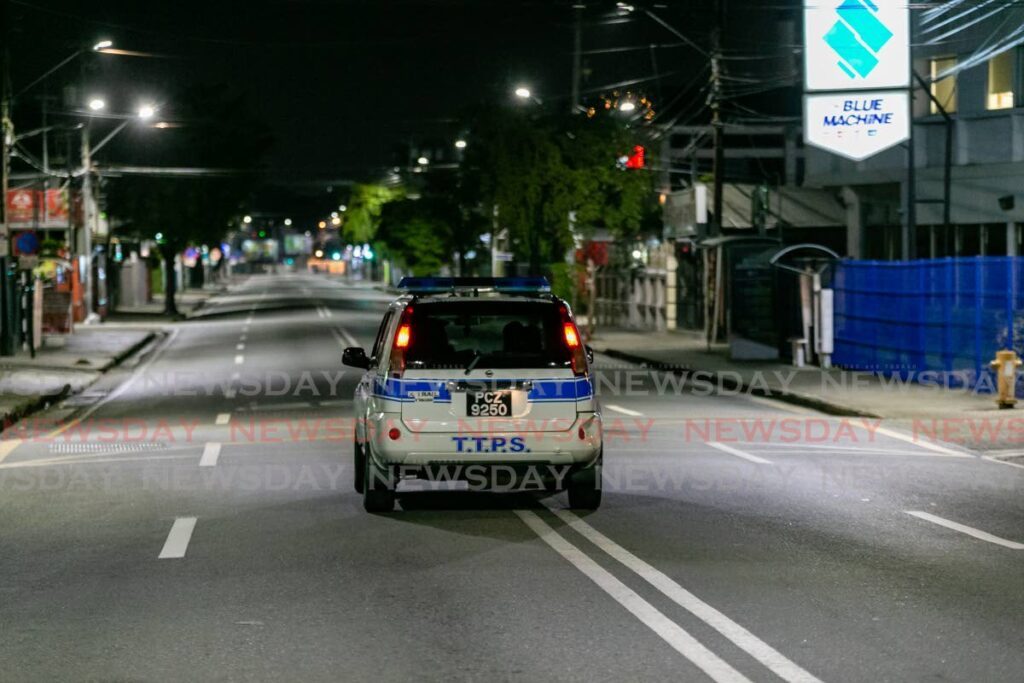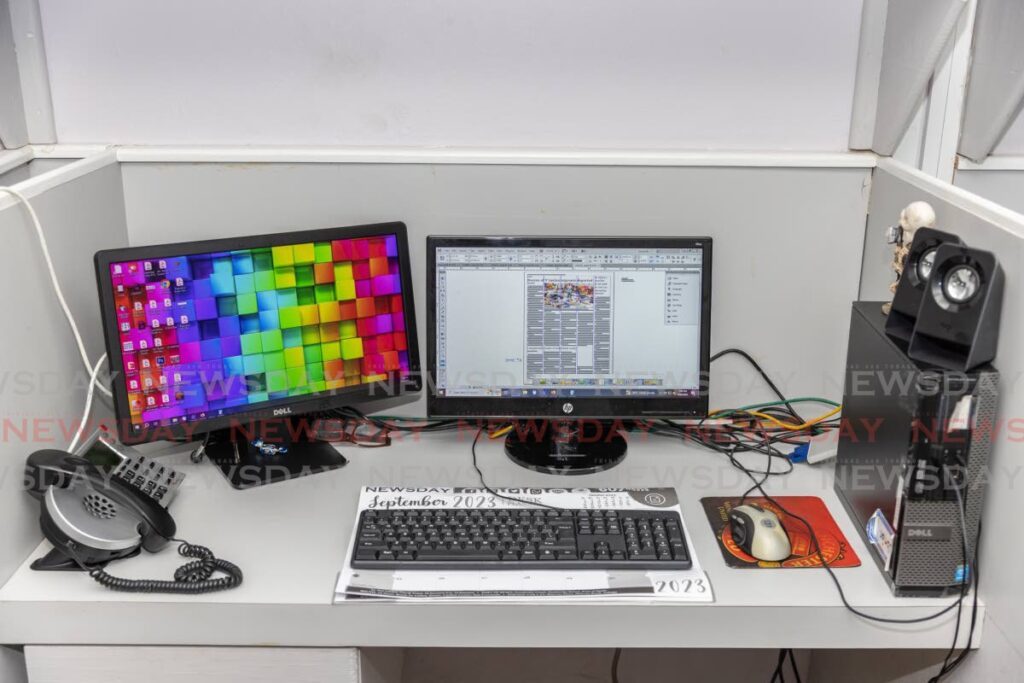Managing a newsroom in a pandemic

Stashed in a box at home, among other more eye-catching mementos, I have a brown manila envelope containing a couple of bureaucratic documents. Perhaps in a decade or two, my grandchildren will take them out and wonder what they mean. I hope they’ll have to puzzle it out, and won’t understand straight away what they are because they’ve lived through more pandemics. Not that the current one is over, as many people have been led to believe.
The documents in the box are a curfew pass from 2021, and two accompanying letters to the Commissioner of Police: one from the end of April, asking for me to be allowed out and about during the “Stay at Home” period of the next few weeks, and the other requesting similar permission during the state of emergency which came into effect in mid-May that year, when there was a curfew from 9 pm-5 am.
The commissioner was reminded in the letter that Newsday was applying for these passes because “you would appreciate that the media (are) an essential service” and because of “the necessity for credible news being communicated to the public during these challenging times.”

The newsroom had to cope not only with the changes everyone had to make because of the covid19 pandemic – learning what we needed to do to stay safe, getting vaccinations once they became available, travelling in half-empty taxis, helping children to learn in virtual classrooms – but also doing our normal job in abnormal circumstances.
At the best of times, every day is a different news day. The paper you try to plan in the morning is usually very different from the one that’s been put together by the evening. And, more slowly, but drastically, the technology changes. There are no longer typesetters who type up stories onto column-wide strips of paper that must then be glued onto a dummy page; editors don’t have to cut stories literally by going into the subediting department with a scalpel and slicing off the ends of any strips of paper that stretch beyond the foot of the page.
Now staff can tweet news as it happens, and they have to write versions of their stories to go online as soon as possible before moving on to write for the following day’s print edition.
But a lot of the actual newsgathering has remained the same: go to press conferences and ask questions; go to the Red House and sit in the media gallery; go to someone’s home or office and interview them.
Until covid hit us, and almost everything changed.
Some things didn’t. The paper has to come out every day. Newspapering changes all the time, but that rule doesn’t. And even in a pandemic, news doesn’t only happen between 9 am and 5 pm. And gathering the news isn’t the end of it. Some stories must get into tomorrow’s paper, but others have to be selected, copy edited, headlines written, photos chosen, pages built. We brought forward our evening deadlines, so that fewer people would need the curfew passes, though we still needed them.
We’ve worked through crises and emergencies before, of course: flooding, storms predicted to hit TT, the hours after mercifully relatively mild earthquakes have struck. For the newsroom we have emergency drills for fires and other such events.
We didn’t have a plan in place for covid, though – who did? So we had to make one, before we knew what we were dealing with. How bad was it? How infectious was it? Could we really keep ourselves safe? How come some people were still claiming this mystery illness was “just a cold,” in the face of rising fatalities?
What helped us keep going at that point was the cheering but completely misguided idea that the lockdown and the precautions, and later the vaccines, would halt covid. One huge wave would wash over us and then it would be gone.

Over two years later, there are still signs of the ongoing pandemic in the Port of Spain newsroom, literally: bearing skulls and crossbones, they remind people to keep their distance from each other (we have newsrooms in Tobago and San Fernando too, but they have much smaller staff numbers). We still have our wall-mounted hand-sanitiser dispensers. There were and are protocols for what staff should do if they have possible symptoms of the virus. Everyone coming into the building must still have their temperature taken (though the usefulness of that was always debatable, and if we acquire a variant whose symptoms don’t include fever at all …).
We’ve been lucky in the newsroom so far; there hasn’t been an outbreak, though individuals have had covid. But early on, the North Central Regional Health Authority kindly arranged a day for editorial staff to be vaccinated, and those who caught the virus through mischance or carelessness didn’t spread it among their colleagues.
We did more to keep it at bay, though. We did things we didn’t know were possible until we’d done them.
Masks were compulsory, of course (a few of us still mask; the pandemic is not over). Most of the chairs were physically removed from the lunch room to dissuade people from gathering there. We asked Richard Rambarran, production manager and Newsday’s minister of almost everything, to build extra desks so that staff could be spaced out, a safe distance apart.
In the early days, the Health Ministry sent out multiple bulletins on covid cases and deaths, and at first, not at fixed times. Eventually we rostered editors to check the newsroom e-mail from home for the late releases – which sometimes came after midnight; a second editor to check the version rewritten by the first; and then one of our hard-pressed digital staff would post it online.
That could be tiring, but it was nowhere near as stressful as making the newsroom safer.
Fortunately there were few live events: press conferences became press releases, or Zoom meetings, like the Ministry of Health’s daily media conferences. Interviews could be done by Zoom too, or by phone. It wasn’t fair or safe to send reporters out to interview random passers-by, assuming we could find any to answer our vox-pop questions, so our People in the Street feature morphed into People on the Internet. So we sent home as many reporters as we could, to work from there.
But photographers couldn’t work like that, and we needed a core group of reporters in the newsroom just in case: what if something happened in Port of Spain and the nearest reporter was at home in Curepe, or Arima? Some volunteered to keep coming in; others were volunteered, though they were all given the choice.
All this meant more work for editors, who were based in the newsroom throughout: we needed to meet – masked and distanced in our meeting room, instead of my cupboard-sized office – to brainstorm ideas or discuss what should be tomorrow’s lead. But editors could no longer just call a reporter over to their desks to brief them on what was expected in a story, or point out that context was missing, or suggest someone else whose opinion they should seek. The number of WhatsApp messages and phone calls editors had to make or send and receive massively increased.
And then it increased again, as we got to the hardest part. When a subeditor was building a page – laying out the stories, headlines and photos assigned to it – it had been easy for an editor to walk across to the subediting department, stand at the sub’s shoulder, and say, “No, this story is the lead for the page,” “Make that headline two decks, not three,” “Drop that story so you can use the photo bigger.”

But then the subeditors were sent home to work remotely – working through their own computers to use the workstations on their desks in the department. Now editors had to open the page on their own computer, message the sub about any changes needed, then check back to see they’d been made. It meant more work, but it also meant we were all safer because there were fewer people physically present in the department. No one complained. Everyone shouldered the extra burdens, adapted to the new methods. The paper had to come out, and it was up to us to make that happen.
That biggest, final step was made possible by the wizardry of Richard and his IT team. Sometimes I’d stand outside my office and watch the busy machines: cursors swooping about digital pages, guided by an invisible mouse; headlines pasting themselves in place; excess lines of text vanishing; photos trundling up or across the page to a spot where they would look better – and not a soul to be seen. For me the memory of that eerie sight evokes the early days of covid: the fear, the stress, the uncertainty, the empty streets, the fact that while other people tried to stay safe at home, in the newsroom – even ¬if it wasn’t exactly business as usual – work went on, because no matter what, the paper must come out.
Judy Raymond, Newsday's former editor-in-chief, is now its editorial consultant.

Comments
"Managing a newsroom in a pandemic"